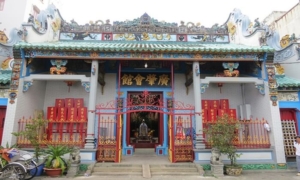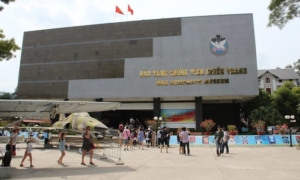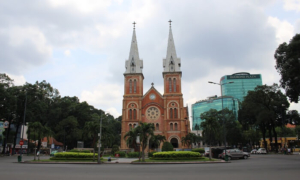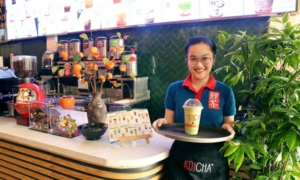Independence Palace, also called the Reunification Palace, is a unique architectural work, a typical historical monument, and a symbol of Ho Chi Minh City. This site has become a famous tourist destination for domestic and foreign visitors.
The image of tanks ramming the Independence Palace gate has become a symbol of Vietnam’s victory on April 30, 1975. People call it the reunification palace tank, which is now displayed in the yard.
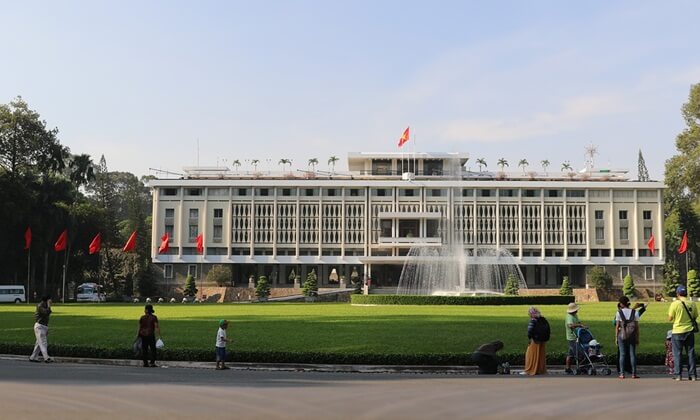
Independence Palace
- Address 1: 135 Nam Ky Street, District 1, HCMC
- Address 2: 106 Nguyen Du, District 1, HCMC
- Price of entrance fee: 400,000VND per ticket
- Opening hours: 8:00 am – 16:00; ticket staff may take a break from 11:00 am – 1:00 pm.
- Average time to visit the Reunification Palace: 1 hour
- Phone: 0283 8223 652
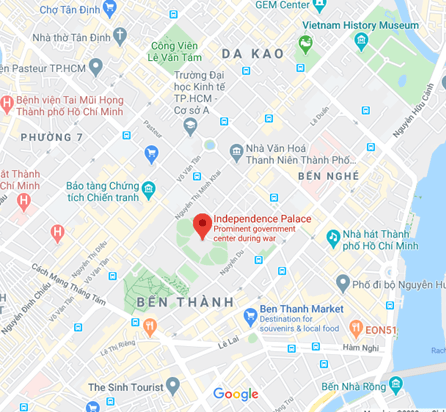
History of Independence Palace
The site of the Independence Palace today was originally the mansion of the Governor of Cochinchine during the French colonial period. It was named Norodom Palace and was built in 1868 – 1871 in the style of Western architecture.
In 1954, the French government representative handed the Norodom Palace to Ngo Dinh Diem’s government. The building was then called the Independence Palace. Since then, the palace has become Ngo Dinh Diem’s family and workplace residence.
In 1962, the Independence Palace was destroyed. After that, Mr. Ngo had the people build another building on the old land of about 12 hectares in the center of Saigon.
But, the government of Ngo Dinh Diem collapsed. The work was still constructed and inaugurated on October 31, 1966, and was associated with events related to the Nguyen Van Thieu government.
The Independence Palace was built according to the design project of architect Ngo Viet Thu, the first Vietnamese to win the Roman Restoration – a prestigious architectural award in Europe.
Independence Palace architecture
In the design, Ngo Viet Thu cleverly combined modern Western architectural style with traditional Asian values.
The highlight of the Independence Palace is a gate that goes right in the middle of the building, which reminds the role of the leader of the public.
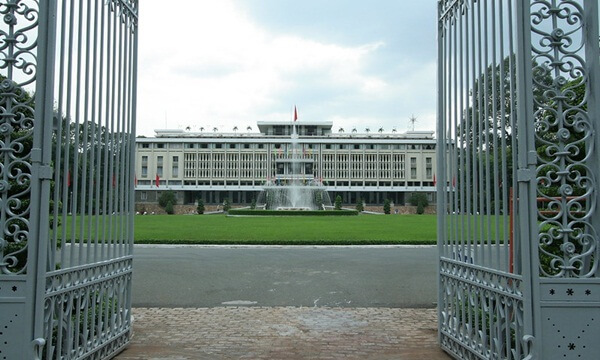
However, this feature often avoids setting up for the smaller houses and villas because of the Fong-Shui technique. The designer put a water pond to reduce the Fong-Shui behind the gate and in front of the building.
Right on the front side of the building is a beautiful screen created with ceramics, but it looks like silk.
The main palace, which has a height of 26m, is located in the center of a 20,000m2 area, including an underground floor, a basement floor, three main storeys, two mezzanines, and one terrace with 95 rooms with different interior decorations.
The building has subdivisions:
- The presidential office and the administration
- The presidential family residence
- An auxiliary area
- A shelter system that can withstand heavy artillery and bombs
The project applied many modern materials and technologies at the time, such as elevators, large-sized toughened glass and ventilation systems, air-conditioners, fire protection, and modern communications.
In terms of architecture, the work is considered an excellent work of architect Ngo Viet Thu with high scientific and aesthetic value. The palace becomes a historical and cultural symbol of Saigoniers and Vietnamese.
The Reunification Palace of nowadays
At 10:45 on April 30, 1975, the tanks of the Liberation Army knocked down the gate of the Independence Palace and went straight into the building.
This event marked the victory of the Government of North Vietnam, and Vietnam became one country. So, the Independence Palace is also called the Reunification Palace.
The Reunification Hall is the venue for important meetings and the reception of heads of state upon arrival in Ho Chi Minh City. The palace area is one of the famous tourist attractions in Saigon and one of the unique national monuments of Vietnam.
Experiencing the ups and downs of history, the Reunification Palace is not only a historical witness, a symbol of the country’s harmony and unity but also a typical architectural construction of the pride of the Vietnamese people.
>>> You may want to visit Tao Dan Park nearby.
Highlight relics to visit in the Independence Palace
More than 5.000 relics are kept in the palace. Many of them are valuable artifacts for history and art. Here are the top things to look at there.
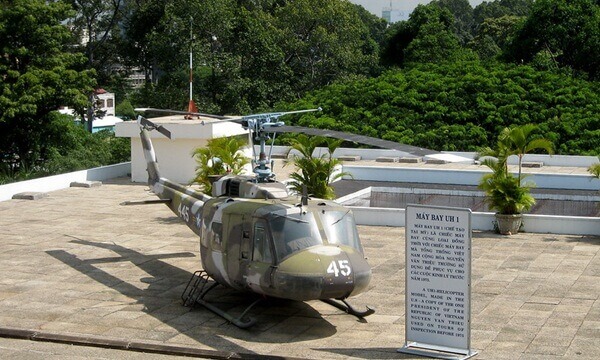
- The reunification tank is displayed in the palace garden. On April 30, 1975, at 10:45 a.m., it destroyed the main gate of the building, showing the spirit of victory and the reunification of the country.
- The helicopter on the roof of the palace is the UH-1 helicopter of President Nguyen Van Thieu.
- The Independence Palace’s system of solid armored tunnels was where the President of the Republic of Vietnam, Nguyen Van Thieu, worked. It is now open to visitors. The bunker is bomb-resistant to two tons and was designed by Lieutenant Colonel and engineer Phan Van Dien.
- Visitors can see many valuable paintings. The Reunification Palace currently keeps Hoa Sen lacquer paintings by painter Nguyen Gia Tri, Ke-Cuc of Thanh Le, Tung Hac embroidery paintings on velvet background (that Army General Mul Hien The gave to the palace), and Phu Dung flowers using watercolor paintings on paper, which are given by the Hong Kong Consulate General in Saigon.
Note to visit the Independence Palace:
This place is an essential historic monument in Saigon. When visiting these sites, you need to follow certain rules to comply with the monument’s regulations.
- The dress code is polite, so do not wear too short. It is better not to wear over the knee.
- Do not carry luggage, food, drinks, animals, weapons, and flammable substances inside.
- Do not touch on the relics displayed.
- Stay within the limited lines.
- Visitors are responsible for any actions that cause damage to the site.
Independence Palace is a symbol of Ho Chi Minh City and the pride of the Vietnamese people. Visiting the monument will surely be a memorable holiday experience in the bustling city.
Will you visit the Reunification Palace when traveling to Ho Chi Minh City, Vietnam?
